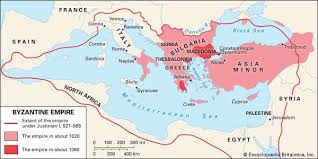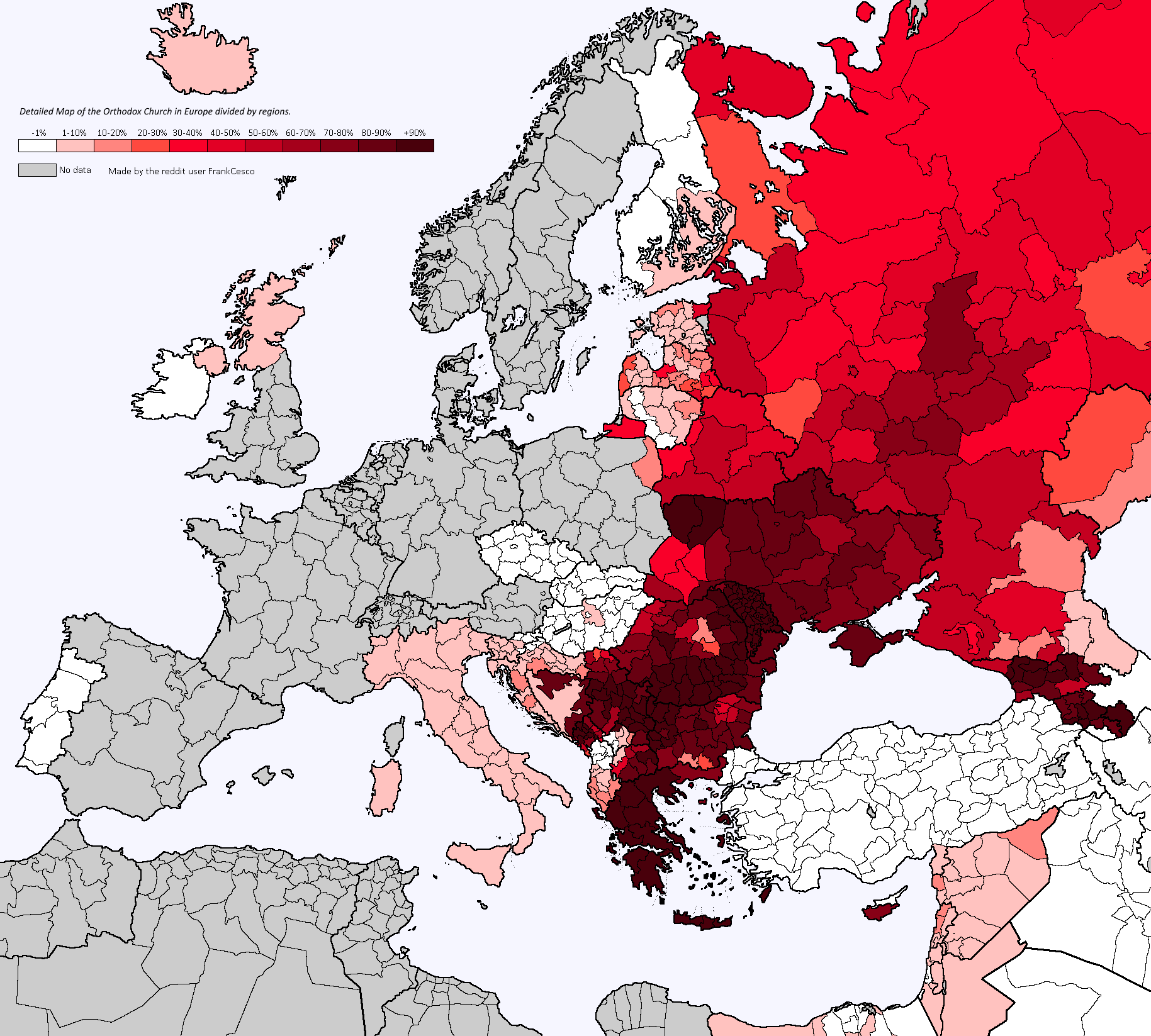“On earth”?
During the first centuries of Christian history, there was little visible evidence that this – Christ’s final declaration before his Ascension – was being fulfilled on earth.
Jewish persecution had scattered Christians in all directions. Then in the year 70 Jerusalem was leveled by the Romans. The remaining Christians apparently fled, taking heed of the Lord’s warning  about the destruction of Jerusalem. Matthew 24:15ff
about the destruction of Jerusalem. Matthew 24:15ff
During the next 2 centuries Christians remained a small minority, subject to occasional persecution. Late in the 3rd century, just as the Faith seemed to be taking hold (some say Christians were nearing a majority in the Empire), systematic imperial persecution began with the aim of exterminating the Church.
And then suddenly everything changed.
The End of Persecution and the Discovery of the True Cross
In 313 the Emperor Constantine the Great issued his Edict of Toleration, and it was finally safe to be a Christian. Immediately Christians wanted to go and venerate the sites of the Lord’s life, death and resurrection. The site of Jerusalem had lain empty after the destruction, until some years later a Roman village called Aeolia was built there. Now Jerusalem began to be rebuilt. In the year 326 the  Emperor’s mother Helen (Helena, Eleni, Ελένη), who had long been a Christian, went in her old age on pilgrimage to the Holy Land. She visited the holy places and gave money for the building of churches there.
Emperor’s mother Helen (Helena, Eleni, Ελένη), who had long been a Christian, went in her old age on pilgrimage to the Holy Land. She visited the holy places and gave money for the building of churches there.
But she couldn’t discover where Christ been crucified. There are differing accounts about what happened next. One story says Saint Helena dreamt one night of a particular field. Another account says an old Jewish man told her what he had heard through his family. In any event she directed men to dig in a field just outside the former city walls. (Legend says the field was covered with basil, which is why basil is traditionally distributed at the feast  of the Elevation of the Cross.) There, under the rubble from the destruction of the city, they found 3 crosses.
of the Elevation of the Cross.) There, under the rubble from the destruction of the city, they found 3 crosses.
How could they know if this was really The Place? Was the middle one the true Cross of Christ? The answer, as usual, was given by miracles which began with the raising of a man from the dead. Helen commissioned the building of a great church and returned home exhausted. She died the next year.
This is an odd “side story”: The historian Theodoret wrote: “The mother of the Emperor… gave orders that a portion of the nails should be inserted in the royal helmet, in order that the head of her son might be preserved from the darts of his enemies. The other portion of the nails she ordered to be formed into the bridle of his horse… to ensure the safety of the emperor…” (Ecclesiastical History, Book I, chapter xvii. ) Apparently it didn’t work very well. Constantine outlived her by only 9 years. Perhaps it would have been better if the Holy Nails had been shared with the people?
The Elevation of the Holy Cross
The Church of the Holy Anastasis/ἀνάστασις (Resurrection) * was finally completed – a large building encompassing the site of  Christ’s burial and Resurrection.
Christ’s burial and Resurrection.
- Western Christians, always more focused on the death of Christ, call it “The Church of the Holy Sepulchre”.
Only a few years later, the Emperor Constantine came to Jerusalem to dedicate the church. The Emperor himself! So many people still living could remember only 20 years before, when Roman emperors were trying to destroy the Church. Many still remembered and prayed for relatives and friends who had been martyred. Many still had wounds on their bodies from the torture. And now the Emperor of Rome had come for the consecration of the great Church of the Resurrection of Christ! It was September 13, 335.
 The next day, September 14, Archbishop Makarios of Jerusalem lifted up the Holy Cross for the people to see. To all it seemed to symbolize the amazing, wonderful thing that had happened. For so long it had been dangerous even to make the sign of the Cross. The Cross had been “put down”, so to speak. Now suddenly the Cross was being lifted up, elevated in the Empire. The Church was free, and people in huge numbers were becoming Christian. Christianity would soon be the official religion of the Empire, and September 14 became a permanent Orthodox festival to celebrate how the Holy Cross of Christ is lifted up in victory in all the world.
The next day, September 14, Archbishop Makarios of Jerusalem lifted up the Holy Cross for the people to see. To all it seemed to symbolize the amazing, wonderful thing that had happened. For so long it had been dangerous even to make the sign of the Cross. The Cross had been “put down”, so to speak. Now suddenly the Cross was being lifted up, elevated in the Empire. The Church was free, and people in huge numbers were becoming Christian. Christianity would soon be the official religion of the Empire, and September 14 became a permanent Orthodox festival to celebrate how the Holy Cross of Christ is lifted up in victory in all the world.
You can hear the jubilation, the thrill of that original celebration in some of the Church’s hymns for September 13, the Dedication of the Anastasis:
“Be consecrated, O new Jerusalem, for your Light is come, and the glory of the Lord has arisen upon you. This house the Father has built; this house the Son has made firm; this house the Holy Spirit has inaugurated, Who enlightens, establishes and sanctifies our souls.” Sticheron from The Praises at Orthros (Matins)
“Come to yourself, O mankind; be made new instead of old, and celebrate the renewal and consecration of your soul. While there is time, let your life be consecrated in all its endeavors. For the old things are passed away; behold, all things are made new. Bring forth this fruit on the feast: be changed for the better, for thus is a man consecrated; thus is the day of the consecration honored.” Doxasticon from The Praises at Orthros (Matins)
You can hear it again in the triumphal words and music of the Troparion (Apolytikion) for the feast of the Elevation of the Holy Cross, which we use on all feasts of the Cross:
This view of the Cross as victory endured in the West for some time. Here is the beginning of a 6th century Latin rhymed hymn by Venantius Fortunatus: “Sing, my tongue, the glorious battle; sing the ending of the fray. Now above the cross, the trophy, sound the loud triumphant lay: tell how Christ, the world’s Redeemer, as a victim won the day.” (There is a gorgeous Western plainsong melody to this, but I can’t find a decent rendition of it online.)
There is nothing sentimental or maudlin about all this. No “On a hill far away stood an old rugged Cross, the emblem of suffering and shame”. The victorious Troparion of the Holy Cross became the imperial anthem of the Orthodox Roman Empire (the equivalent of our American “Star Spangled Banner”) and before long a favorite marching song of the imperial army! The Cross of Christ was conquering the world.
“The Kingdoms of this world have become the Kingdom of our God and of his Christ”.
This passage from Revelation 11:15 spoke of Christ’s final victory. This was how the Byzantines, as we now call them, saw their new Christian Roman empire – as the colony of Kingdom of Heaven on earth, the Church united in harmony with the Empire, an Empire composed of many peoples, many “kingdoms of this world”. Christ’s declaration that he possessed “all authority…on earth” was finally coming to pass.
This synthesis of Christianity with power, culture, civilization – how did it work out? Very well, for the most part. Neither Church nor Empire dominated the other, though there was naturally a lot of jockeying back and forth. Constantine moved his capitol to a new city which he built on the Bosporus. It was soon called Constantinople, “Constantine’s City”.  From there the Byzantine Empire produced remarkable Christian art, iconography, architecture, philosophy, theology, music, a surfeit of ceremonialism – and great horse races, so over-popular they drove Patriarch John Chrysostom crazy. (Look at that stadium above! The great Hagia Sophia, to the right along the shore, seems almost small in comparison.) Far and wide, Constantinople was called simply “The City”. Byzantines called Constantinople the “new Rome”, the new seat of imperial authority, and soon the East would be what remained of the old Roman Empire. Some Greeks still referred to themselves as Romans (Romioi, Ρωμιοί) up into the 20th century
From there the Byzantine Empire produced remarkable Christian art, iconography, architecture, philosophy, theology, music, a surfeit of ceremonialism – and great horse races, so over-popular they drove Patriarch John Chrysostom crazy. (Look at that stadium above! The great Hagia Sophia, to the right along the shore, seems almost small in comparison.) Far and wide, Constantinople was called simply “The City”. Byzantines called Constantinople the “new Rome”, the new seat of imperial authority, and soon the East would be what remained of the old Roman Empire. Some Greeks still referred to themselves as Romans (Romioi, Ρωμιοί) up into the 20th century
Furthermore, the Byzantine emperors seem to have used their power wisely. As British historian Steven Runciman wrote in A History of the Crusades,  “Byzantine history was remarkably free of wars of aggression. Justinian’s campaigns had been undertaken to liberate Romans from heretic barbarian governors, Basil II’s against the Bulgars to recover imperial provinces and to remove a danger that menaced Constantinople. Peaceful methods were always preferable, even if they involved tortuous diplomacy or the payment of money.” They seem to have assumed the world was coming to them, not by military power but by the power of Jesus Christ, the power of his Cross.
“Byzantine history was remarkably free of wars of aggression. Justinian’s campaigns had been undertaken to liberate Romans from heretic barbarian governors, Basil II’s against the Bulgars to recover imperial provinces and to remove a danger that menaced Constantinople. Peaceful methods were always preferable, even if they involved tortuous diplomacy or the payment of money.” They seem to have assumed the world was coming to them, not by military power but by the power of Jesus Christ, the power of his Cross.
It did not turn out quite that way, did it? A century later the old Rome fell, and the Western part of the Empire was ruled by pagan or Arian barbarians. * Only bits and pieces of it were ever recovered. In 800 under Charlemagne a new independent Western so-called “Roman Empire” was established, based in northern Europe. The Middle East and North Africa were conquered by Muslims, and later by Ottoman Turks who gradually pressed in on The City itself. The fall of Constantinople in 1453 and then of what little remained of the Byzantine Empire came as a horrible shock. Some Greeks never accepted it. After the defeat of the Turks in World War I they tried to recapture Constantinople – unsuccessfully, to put it mildly. But to accept the irretrievable loss of the Orthodox Roman Byzantine Empire seemed to them to deny all their hopes, the triumph of the Cross of Christ over the world.
- my German ancestors
Constantinople was gone, but Orthodoxy endured. The Orthodox Church in the Middle East had already survived 7 centuries under the Muslims, and in the interim Eastern Europe had been converted at the direction of Constantinople. The Russian Church declared that they were the third and last Rome, and then cut themselves off from the rest of the world. Holy Orthodoxy continued.
“On earth?”
So how well has the non-Byzantine-imperial Orthodox Church done at showing forth the authority of Christ over the world? – we who originally elevated the Cross over the world. There are remnants of Orthodoxy left in the Middle East. Modern Turkey, the former bulwark of Orthodoxy, is now almost bereft of Christians. Istanbul, the former Constantinople, has a few thousand Orthodox left. In the western world, Orthodoxy is a tiny minority, growing but very slowly. Orthodox Russia was increasingly controlled, almost subsumed, by the Czarist state and then nearly destroyed by the Communists. Post-Communist Russian Orthodoxy has regained its former glory, but apparently also its former subservience to the Russian state, which seems very worrisome. Among “Oriental Orthodox” there is a substantial Christian minority left in Egypt and almost a majority in Ethiopia. Above are Orthodox countries today, but I wonder: is Iceland really more than 1% Orthodox? Today only Russia (in its way), Greece and a few other Eastern Europe countries retain something still recognizably Byzantine – with the great majority of the people Orthodox, Orthodoxy integrated with popular culture
Among “Oriental Orthodox” there is a substantial Christian minority left in Egypt and almost a majority in Ethiopia. Above are Orthodox countries today, but I wonder: is Iceland really more than 1% Orthodox? Today only Russia (in its way), Greece and a few other Eastern Europe countries retain something still recognizably Byzantine – with the great majority of the people Orthodox, Orthodoxy integrated with popular culture
As for the state of other forms of Christianity today: The rise of the modern secular state committed to no particular religion (the United States being the first of these) was the death knell of traditional Christendom, the worldwide band of Christian nations. In the few countries which are still formally Christian (England, Sweden and the like), Christianity seems almost divorced from popular culture, and church attendance is negligible. In the United States, one of the most “religious” of countries, church membership is declining and attendance even more rapidly – and little wonder, but as I’ve said before, that’s a topic for another time. The West has given birth to a huge number of denominations, speaking with a cacophony of voices. Those which are growing rapidly would be almost unrecognizable to Byzantine Orthodox. For example, a kind of off-beat Chinese Christianity which submits to strict state control has been growing, but the government persecutes faithful Christians, lately even to the point of burning Crosses and Bibles.
And looking at the world as a whole, God knows there is very much good, but there is also so very much evil.
There’s the story of the rabbi and the priest. The priest asked the rabbi, “Do you really believe that the Messiah has not come?” The rabbi answered, “I do not.” The priest asked, “Why not?” The rabbi went to the window, opened the curtain, pointed at the world going on just as it has for God only knows how many thousands of years. And he said, “Look.”
Remember what John the Baptist predicted? That when the Messiah came he would turn everything upside down. He would “take the axe to the root of the trees”. Evil would be destroyed. The Kingdom of God would come.
Where are Jesus Christ and his Church triumphing today? trampling out evil? Yet 17 centuries later, every September 14 we Orthodox, in churches large and small all over the world, solemnly celebrate the beautiful feast of the Elevation of the Holy Cross.
It would seem to be an anachronism, the sad remnant of an ancient hope, unfulfilled. And yet we Orthodox continue to celebrate it. Why?
Next week we’ll look at how Christ described his authority, his kingship. We’ll begin with his conversation with Pontius Pilate: “So you are a king, then?”
Next Week: The Elevation of the Cross, Part 2
Week after next we begin a new series – The Seven Deadly Sins

In my relatively brief time in New England, the Red Sox won the pennant and the World Series. It was quite a thing to watch. I only encountered Orthodoxy last year and after reading this, I suspect we may be a long way from another Series win. I sense that I may have, metaphorically, become a Cubs fan in the middle of the 20th century. Out of five Patriarchates, one went rogue, three are under Muslim (or Jewish) rule, and the last was disposed of by the Soviets and replaced with one more amenable to the state and even that one has now been given a good whacking by the EP. Then there’s American Orthodoxy with its overlapping jurisdictions and one with a grant of autocephaly that nobody else recognizes. The team is in rough shape. Maybe the Church needs some new management in the front office. As bleak as it seems, I’ve been in other places and Orthodoxy is the original recipe. Evangelicalism is like turkey bacon to me, now.
Well, it seemed impossible but the Cubbies came back, didn’t they? They won the 2016 World Series and are leading the Central Division of the National League right now – and are a game and a half ahead of my Milwaukee Brewers. Bah! Regarding the “front office” of the Orthodox Church – where is it? It’s not the Ecumenical Patriarch. The head of the Orthodox Church is Our Lord Jesus Christ. …so we want better management?! Regarding the Orthodox Church I feel like the apostles when Christ asked “Will you also go away?” Peter said, “Lord, to whom shall we go? You have the words of eternal life.” There isn’t anywhere else.
Yeah, there isn’t anywhere else. A friend of mine kind of surprised me by asking about Orthodoxy. He’s been around the theological block, too, but he’s younger and may still think there’s something else left.